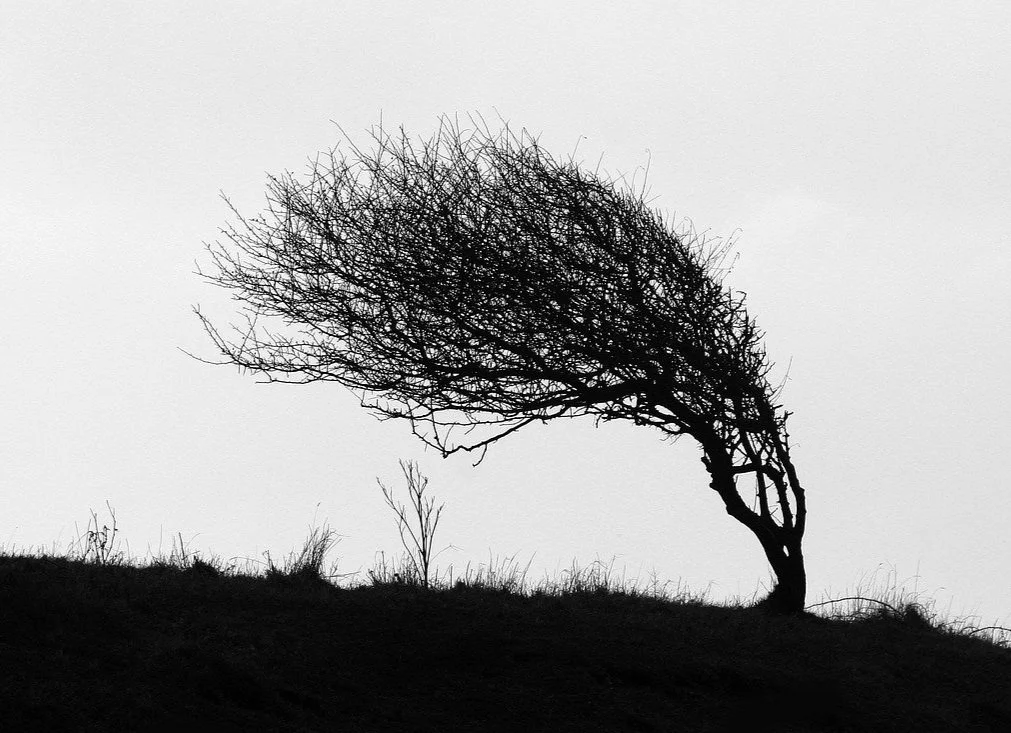Why Is It So Stormy In Ireland?
Why is Ireland so stormy?
Out of my office window I can see trees, bending in the wind, on the moorland the long grass is crushed flat. Indoors phones and laptops are kept fully charged, candles are at the ready, the gas bottles that power the cooker hob are full. Just in case. An expedition outside is pure adventure and exhilaration, the power of the wind is incredible. In my part of Ireland, we’re pretty used to storms; we get them so often. But why is it so stormy in Ireland?
The brilliant earth.nullschool website has a live feed which shows, in green, the wind patterns around the world. High winds are shown in red. Today, the only part of the whole world with wind speeds that justify a red wind pattern is Ireland. This one is Joselyn, following barely 24 hours after Isha, which saw my partner spending nearly 10 hours on a ferry crossing that should have taken three. The final seven hours were spent waiting for the wind to drop enough for the ferry to dock. Other parts of the country have floods, lost power and have roads blocked by fallen trees.
Powerful storms are given names with the first letter following the alphabet, beginning with A. This year we are already up to a name beginning with J. It is quite unusual to get that far through the alphabet.
The winter of 2013/14 was the stormiest on record, but in 2017 Storm Ophelia caused some € there have been years with a very high level of storminess, characterised by more frequent and intense storms. The stormiest winter on record for Ireland to date was 2013-2014, while Storm Ophelia in 2017 caused €70 million worth of damage.
A look at the record books shows there are decades when there are more severe storms. 1910-20 and 1980-90s had particularly wild winters. The high levels of storminess is due to an atmospheric circulation pattern, the North Atlantic Oscillation. This is an index which reflects the difference between low pressure over Ireland and high pressure over the Azores. When there is a big difference the westerly airflow over the Atlantic strengthens which goes a little way to explaining why there are so many storms in Ireland.
A small history lesson – 1400 to 1850 is known as the Little Ice Age because of the colder weather, but there were also more intense storms. The worst of these happened on 6 January 1839 and is known as the Night of the Big Wind. The Big Wind killed 300 people and wrecked 42 ships. On the Aran islands near me, there are boulders on the 30 metre high clifftop launched there by the waves.
One theory for the storms is that they are caused by a strong cooling of the North Atlantic. Records from Iceland show a greater persistence of sea ice around the coastline during the Little Ice Age. Sediment from the melting icebergs
The analysis of ocean sediment at sites across the North Atlantic shows that the sediment deposited during the Little Ice Age includes coarse sand and gravel dropped by melting icebergs. As icebergs are no longer able to reach sites this far south, the past ocean temperatures must have been cooler. A steeper temperature difference between the cold north Atlantic and lower latitudes may have allowed the intense Little Ice Age storms to form.
On Achill Island, close to me, a unique sand layer has been found deep within bogs marking a severe period of storminess that occurred 5,200 years ago, when sand was blown across the island. The remains of oak and pine trees have been found in exposed coastal areas along the west coast an indication that there must have been calmer, warmer conditions 4,000 to 6000 years ago, which meant that large trees could grow.
I guess we can only wait and see how our Irish climate will change in the future with the added impact of global climate change. If I have power, I don’t mind the storms. Good raingear and a hat certainly help, and the rain certainly encourages me to stay indoors working on my next book.
There are some fabulous clips on Youtube of Galway storms, my particular favourite is Teresa Manion during storm Desmond in 2015, well worth a look if you want a giggle.
Image courtesy of RonPorter @ Pixabay

